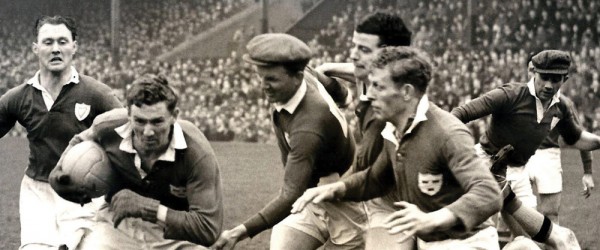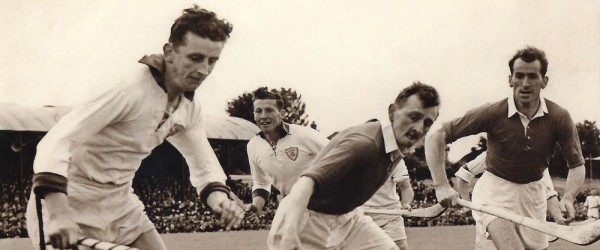Hurley Making and Repair
One of the most iconic exhibits in Lár na Páirce is one relating to hurley making and repair. Some of the items in the exhibit come from the hurley making shed of Tom Hayes, who was a noted maker of hurleys in Kilbreedy, Ardmayle, Boherlahan some years ago.
The exhibit is dominated by a life-size model of a hurley maker, standing behind his work bench holding some of the tools of his trade. In front of him is a well-seasoned ash butt ready to be cut into makings.
Ash has a couple of qualities, which make it suitable for making hurleys, flexibility and grain. Flexibility is important in a hurley stick as players’ hurleys clash in a game and the bit of ‘give’ in a hurley reduces the amount of breakage.
The second important attribute of ash is the grain, even though with banding, this isn’t as important as it used to be. The ideal hurley will have the grain travelling down the handle and curving round the bos. Traditionally the best makings of hurleys were cut from the banks of rivers, where the ash grew out of the bank and turned up giving it the perfect grain for hurleys. Hurleys made from such makings lasted much longer.
Repair
Scattered on the work bench are a number of hurleys in various stages of repair. Before the arrival of more affluent times, when clubs had more money for the purchase of hurleys and supplied replacement hurleys to their players, repairing hurleys was an important craft. Many hurley makers were as good at repairing broken sticks as they were at producing new ones.
There are examples on this bench of different repair methods. Some of them are quite elaborate as different kinds of splicing illustrate. We can see examples of straight splicing, v-spicing and flat splicing. Any of these tasks would take time and were used at a period when labour was cheap and the broken hurley was repaired rather than a replacement hurley purchased.
As well as splicing, banding was a more common repair option. The bands used were strips of metal taken from crates such as tea chests. The bands were made to suit the part of the hurley to be banded and put on tightly until it cut into the timber. These bands prolonged the life of the hurley and are now used on new hurleys as well as used hurleys that have been cracked. Whereas they were very much in use in the past, there are issues of health and safety with the use of metal on the hurley today.
Different Styles
While all hurleys look the same to the uninitiated, there are variations in hurley sticks. Most hurley makers have their distinctive patterns and styles, and hurlers have their own particular preferences. In general it can be said that hurleys in the past were heavier in the bos, when ground-hurling played a much greater part. Today the hurley stick is a lighter affair, which facilitates the picking of the ball off the ground and the possession hurling that has become the norm.






